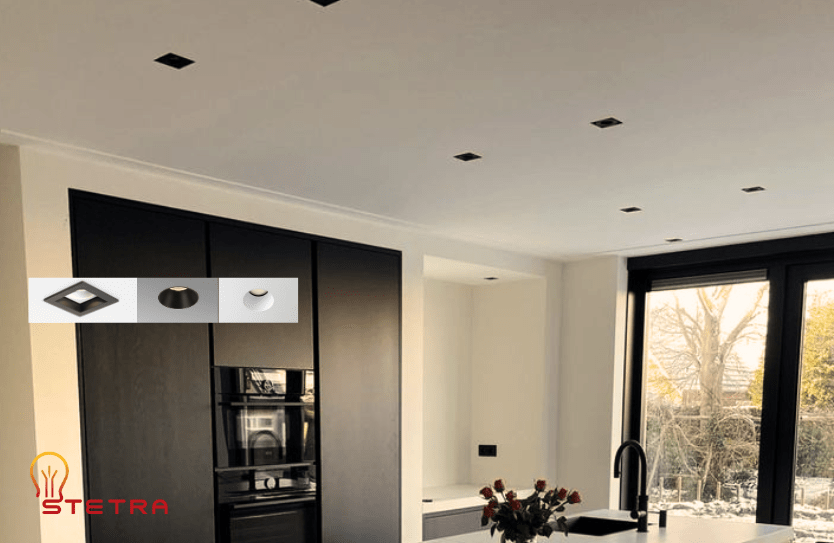Recessed lighting is a popular choice for homeowners and designers aiming to achieve clean, modern, and efficient lighting. When done right, a well-thought-out recessed lighting layout can enhance a room’s appearance and functionality. In this post, we’ll explore the benefits of recessed lighting layout, including essential tips on spacing, angles, and installation to help you achieve the best results.
Why Recessed Lighting Layout Matters
Recessed lighting isn’t just about choosing stylish fixtures. It’s about planning a layout that provides optimal light distribution, minimizes shadows, and highlights key areas. Poor placement can leave rooms looking dull or create uneven lighting that disrupts the overall ambiance.
A proper recessed lighting layout ensures:
- Even Light Distribution: Proper spacing avoids dark spots and enhances room brightness.
- Versatility: Suitable for various spaces like kitchens, living rooms, hallways, and offices.
- Aesthetics: Clean, modern appearance with fixtures that blend into the ceiling.
- Energy Efficiency: Using LED recessed lights can reduce energy consumption while providing bright, clear lighting.
Key Considerations for Recessed Lighting Placement
Planning your recessed lighting layout involves considering factors like room size, ceiling height, and the purpose of the lighting. Here are some tips to get started:
- Spacing: A general rule of thumb is to place recessed lights approximately 4 to 6 feet apart. Divide the ceiling height by two to get the ideal spacing. For example, an 8-foot ceiling would require lights spaced about 4 feet apart.
- Angles: Directional recessed lights work well for highlighting art pieces or architectural features. Adjust the angle to avoid glare and ensure optimal illumination.
- Task Lighting: In work areas like kitchens, focus lights over countertops and preparation zones. Place lights directly above the workspace to eliminate shadows.
- Accent Lighting: To highlight specific areas or objects, angle the lights toward focal points such as artwork, shelves, or textured walls.
For precise calculations and perfect placement, try our Recessed Lighting Calculator.
Installation Tips for Recessed Lighting Layout
Installing recessed lighting may seem straightforward, but proper planning ensures the best outcome. Consider the following tips:
- Use LED Lights: They are energy-efficient, long-lasting, and available in various color temperatures to suit your needs.
- Check Insulation Compatibility: Ensure your recessed lights are IC-rated if installed near insulation to prevent overheating.
- Consider Dimming Options: Dimmable lights offer better control over ambiance and energy usage.
- Avoid Overcrowding: Too many lights can make a room feel clinical. Stick to your calculated spacing for a balanced look.
- Wiring Safety: Make sure your wiring is properly installed and complies with safety regulations to avoid fire hazards.
- Install Trim Kits: Trim kits enhance the appearance of recessed lights and prevent glare. They also help direct light where you want it.
- Use Gimbal Lights for Flexibility: Adjustable gimbal lights are ideal for highlighting artwork, wall textures, or architectural features with precision.
Using the Recessed Lighting Layout Calculator Effectively
To simplify your recessed lighting planning, use our Recessed Lighting Calculator. This tool helps you determine the optimal spacing and placement of recessed lights based on your room’s dimensions.
How It Works:
- Enter the room’s width and length.
- Choose your preferred unit (Imperial ft or Metric).
- Click “Calculate” to receive precise recommendations.
Example Calculation:
If you enter a room size of 20 feet by 20 feet, the calculator will suggest:
- Number of Lights at X-axis: 4
- Number of Lights at Y-axis: 4
- Spacing lights at X-axis: 5.33 ft
- Spacing lights at Y-axis: 5.33 ft
- Distance off the walls: 2 ft
- Total lights: 16

The visual representation on the right shows a black square representing the room layout with glowing recessed lights arranged in a perfect grid. This visualization helps you understand how the lights will look when installed.
Why Choose Stetra Lighting for Your Recessed Lighting Plan
Planning your recessed lighting layout can be challenging, especially if you want a polished, professional look. At Stetra Lighting, we offer comprehensive lighting plans, photometric reports, and 3D visualizations tailored to your needs. Whether you’re designing a cozy living space or a commercial office, we can help you achieve the perfect lighting setup.
Check out our portfolio to see some of our work. For personalized assistance, visit our Lighting Services page or order professional photometric calculations and we can send you a professional report for your chosen light fixtures.
Final Thoughts
A well-planned recessed lighting layout can make all the difference in how your space looks and feels. By following proper spacing, angle adjustments, and installation tips, you can create a comfortable and visually appealing environment. Ready to get started? Use our Recessed Lighting Calculator to simplify your planning process or reach out to us for expert guidance.
Looking forward to making your lighting vision a reality!

